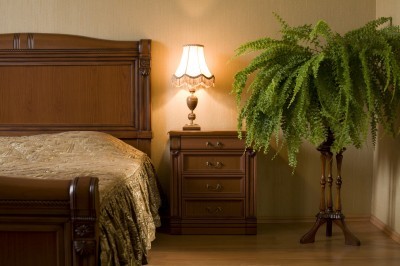






Plants bring movement and life to every room in your home. However, you will be pleased by the whole picture only if there is harmony in the arrangement and color of the plants you have chosen. Once you have learned how to take these things into account when choosing your indoor plants, you can let your taste and imagination plan the plant decor you have living in your home.
The larger the room you are working with, the bigger and more numerous the plants can be. Let’s face it, a single small green plant looks lost in a large empty space. Several flowering plants in a basket or arranged in small pots on the same table can serve as a beautifully colorful accent to a room. Tree-like plants have great importance in the sense of decorating. Large-leafed species like dracaena, philodendron or the banyan tree (Ficus benghalensis) can really fill up a sparsely furnished room or entrance hall and leave their mark.
In a small room, large plants are oppressive and take up way too much space. To get the best effect, you should choose mid-size or small plants with large delicate leaves. Put the plants where they are going to be visible. Don’t put too many plants in a small space or it will get too crowded and your individual plants won’t make their full impact on the room.
Plants always look best against simple backgrounds. If they have large foliage, they should be placed in front of wallpaper with a small pattern. Large patterned wallpaper calls out for filigreed leaves or ferns. Even the umbrella sedge (Cyperus) would work for that. Wood-paneled walls like climbing plants arranged on a wood or bamboo support. These also look great by brightly painted walls.
Make sure your decorative scheme takes into account the way light enters your room. If you put the plants in front of a bright, sunny wall, their shadows can create interesting and unusual patterns on the wall, ceiling or even plain carpeting.
Make sure the colors of leaves and flowers you choose don’t clash with your decor. You don’t want to take expensive furnishings and wall coverings and reduce them by the wrong colored flowers in your pots. Place your plants by each other where they can compliment one another. Put larger plants in the background of smaller plant groupings. A little bit of ivy (Hedera helix) growing over the edge of a pretty bowl looks nicely casual.
Not only do plants affect your decorating sense and help you pretty up your home, they all have some sort of way of improving your room climate. The following plants will increase the humidity in your home:
Some plants reduce the chemicals in the air. The following plants all reduce things like benzol, TCE, and formaldehyde:
Different furnishing styles take on different plants. It’s important that you put the right plants into your decor to “complete the picture.” Yucca, Schefflera and rubber trees (Ficus) fit in well with wooden furniture. Flowering plants look great with a country style decor. Bulbs and primulas in the spring and special geraniums in the summer work great here. If you like the straight or gently curved forms of steel, glass, marble and varnished wood, things like the snake plant (Sansevieria trifasciata), Swiss cheese plant (Monstera deliciosa), Dracaena and Guzmania work wonderfully.
Plants with simple gently curving lines work in art nouveau and art deco settings. The flamingo flower (Anthurium) and peace lily (Spathphyllum) are perfect. Furniture made of bamboo and rattan and oriental style shapes are perfect for exotic hanging plants like string of pearls (Senecio royleyanus) or wax plant (Hoya). Traditional English or French styles go well with bushy, vigorously flowering plants like cyclamen, camellias, gloxinias (Sinningia hybrids) or begonias.
All you have to do is play around creatively with plants and figure out what enhances your style. It’s really not that hard. Once you start placing plants, you will know what goes with what and what doesn’t.
Copyright © www.100flowers.win Botanic Garden All Rights Reserved